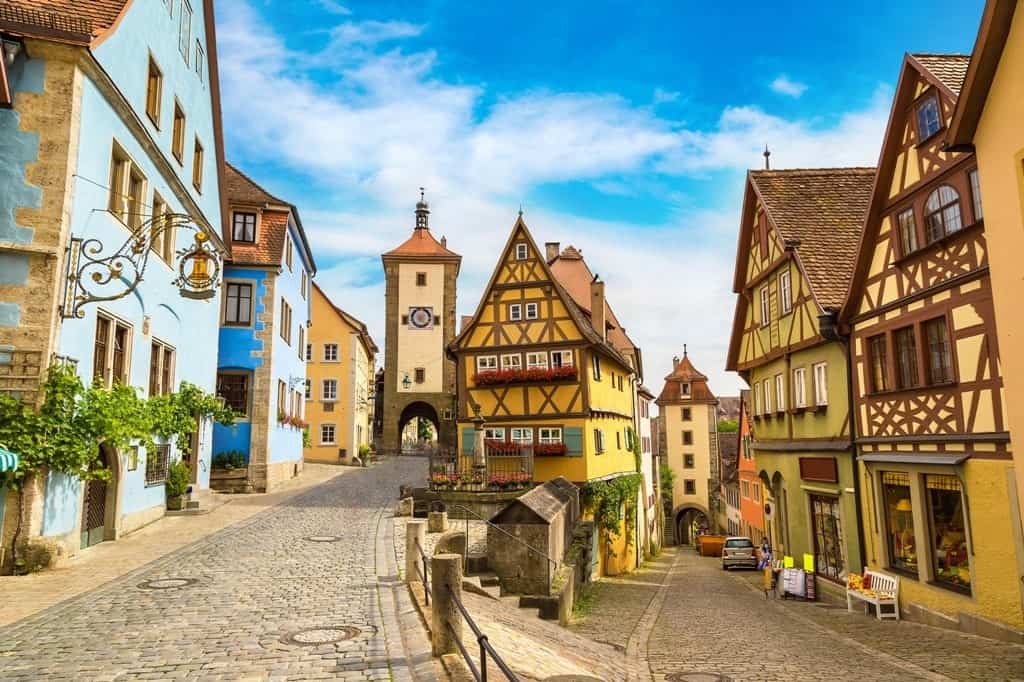Germany is one of Europe’s most incredible travel destinations. The country is home to over 80 million people and is the second most populated country in Europe. It borders Belgium, Luxembourg, France, Switzerland, Austria, Poland, the Netherlands, and the Czech Republic. Nearly 40 million tourists visit Germany each year to experience its incredible food, history, and culture.
The country is home to various medieval towns, each offering a fascinating insight into its European history. You can see medieval architecture in larger German cities, like its capital, Berlin, and Hamburg, as well as the various smaller Medieval towns we’ll feature here.
Table of Contents
Best Medieval German Cities and Towns to Visit
1. Rothenburg Ob Der Tauber
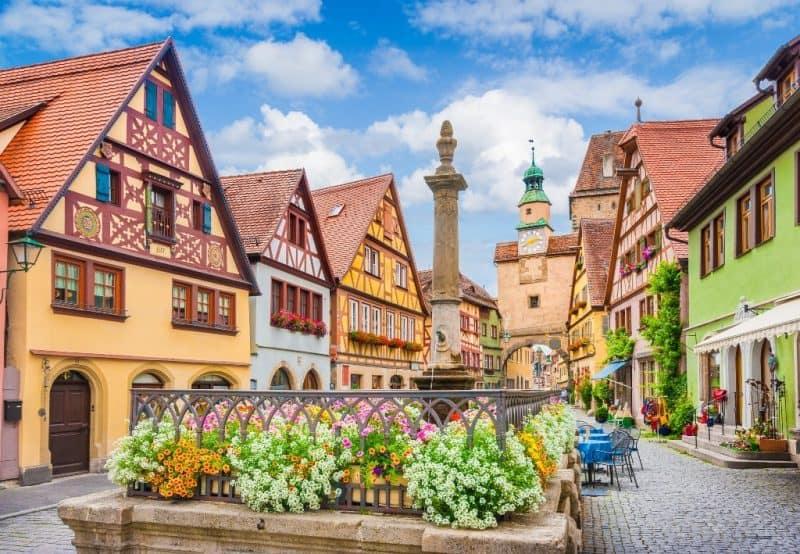
If you’re visiting the Northern Bavaria area you should check out Rothenburg Ob Der Tauber. It is one of Germany’s finest medieval towns, and here you can find medieval streets, buildings, and churches. A popular place to visit is the Altstadt, which is a medieval district home to museums, bars, and restaurants.
Also, the town walls are a top-rated medieval attraction. It takes around 30 minutes to walk around the Town Walls, including the massive 1500s gatehouse. You should stop beside the Rödertor – it is a stunning part of the town and there are excellent views along the way.
2. Goslar
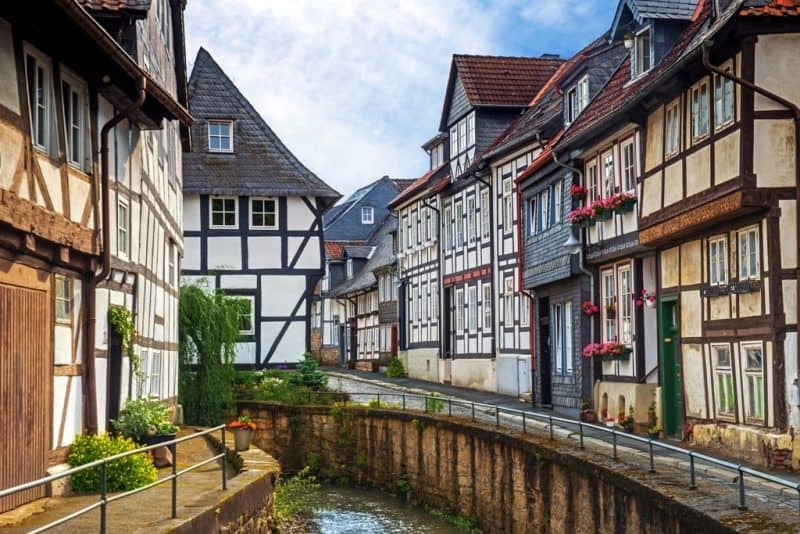
Goslar is a medieval German town, home to various UNESCO World Heritage sites and hugely popular tourist attractions. Goslar is over 1,000 years old and the marvelous Harz mountains surround the town and offer incredible views if you fancy a hike.
A top-rated attraction is the Weltkulturerbe Rammelsberg Museum & Besucherbergwerk. The museum is inside a former silver mine and the museum displays various geology exhibits and tours of 18th-century shafts. Also, a famous landmark is the Marktplatz because it marks the center of the city.
3. Miltenberg
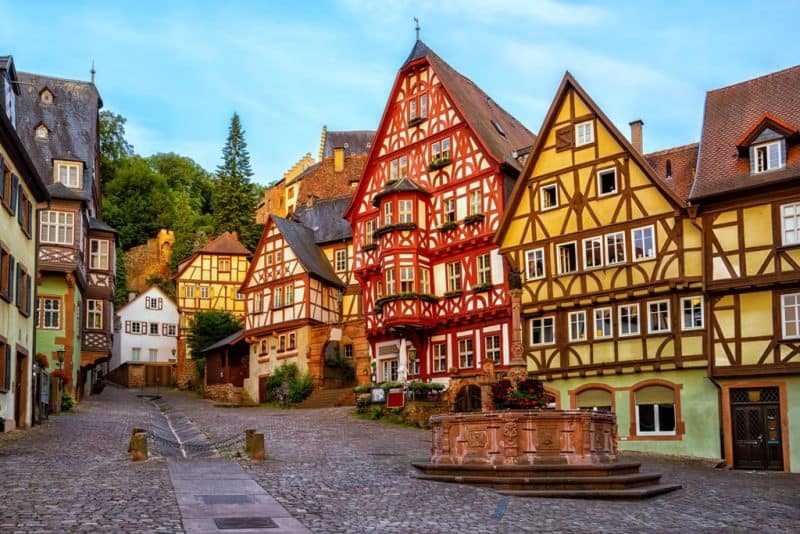
You will find Miltenberg in the Lower Franconia area of Bavaria. Although it is a small medieval town of 9,000 people it is well worth the visit. There are over 100 listed half-timbered buildings. The oldest building dates back to 1339 but most buildings date back to the 17th and 18th centuries.
The Alter Marktplatz is the perfect spot to marvel at the town’s architecture. You will see endless half-timbered houses conveying the town’s medieval nature. You should check out the Museum Stadt Miltenberg because it offers modern galleries, a Roman ceremonial shield boss, and numerous historical artifacts from the town.
4. Tübingen
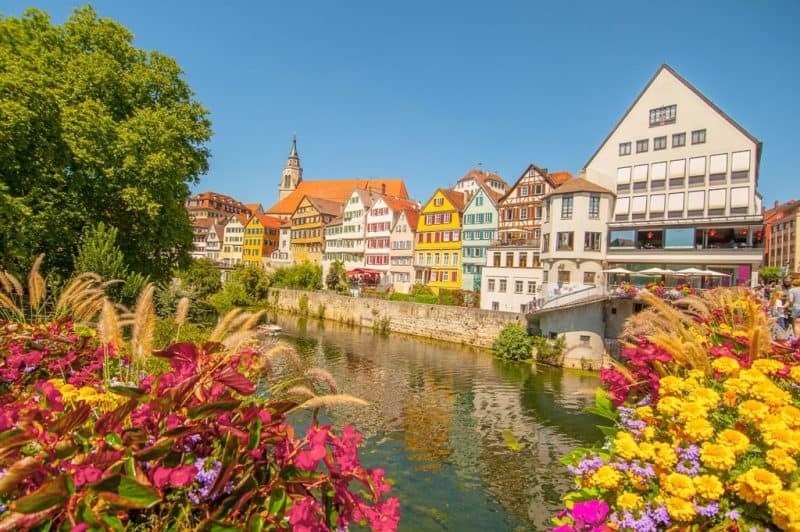
You’ll find Tübingen 20 miles outside of Stuttgart. The medieval town is home to around 90,000 people and has Germany’s youngest median age due to its status as a university town.
Tübingen’s most famous attraction is Market Square because of the incredible old architecture. It offers an eclectic mixture of modern-shops, restaurants, and bookstores. Also, Schloss Hohentubingen is a fantastic focal point. It is a medieval castle, built in the 11th century and expanded in the 16th century. It represents a mixture of a modern castle and a medieval fortress.
5. Regensburg
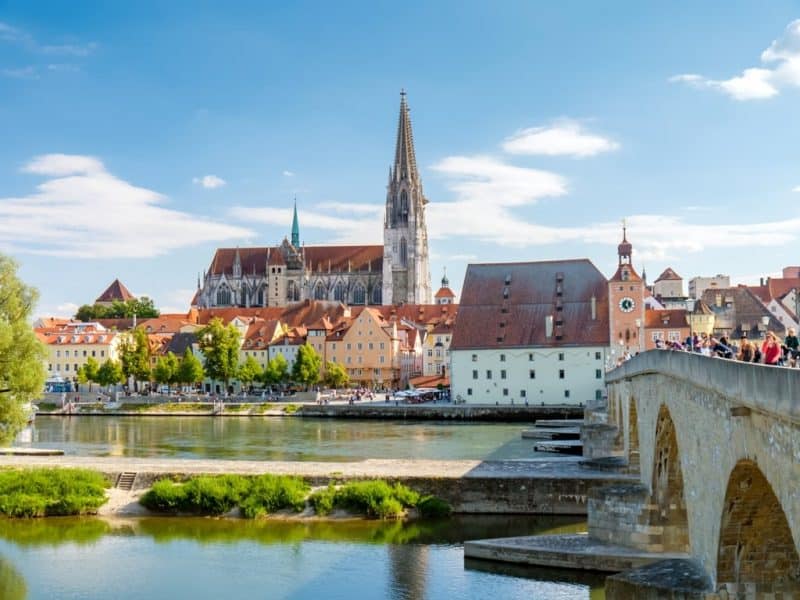
Regensburg is in Eastern Bavaria and it’s famous for the preservation of its medieval core. The most famous attraction is the Old Stone Bridge, a 12th-century bridge that links the Old Town with Stadtamhof.
Until the 1930s, it was the city’s only bridge across the river but today it attracts thousands of tourists because of its medieval beauty. Another popular attraction is the Walhalla, a hall of fame that celebrates famous people in German history. It is a neo-classical building and displays over 2,000 years of history.
6. Bacharach
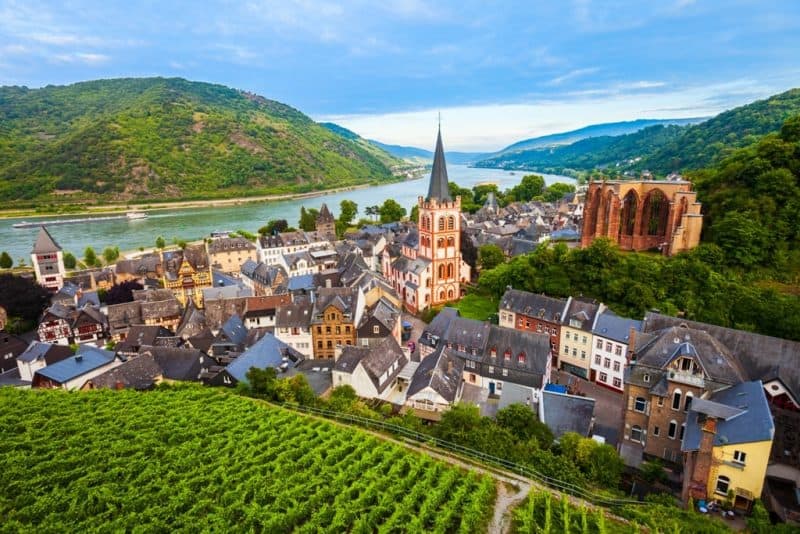
Bacharach is in the Mainz-Bingen district of Germany and one of the country’s most famous medieval towns. The town is home to Burg Stahleck, one of Germany’s most popular attractions. The castle stands 525 feet above sea level, offering incredible views of the surrounding mountains.
Unfortunately, the castle was destroyed in the 17th century but locals rebuilt it in the 20th century. Another excellent attraction is the Postenturm, a 14th-century building offering superb panoramic views of the surrounding areas. The Alte Haus is also popular with its Bavarian-style restaurant offering delicious food and indoor and outdoor seating.
7. Wurzburg
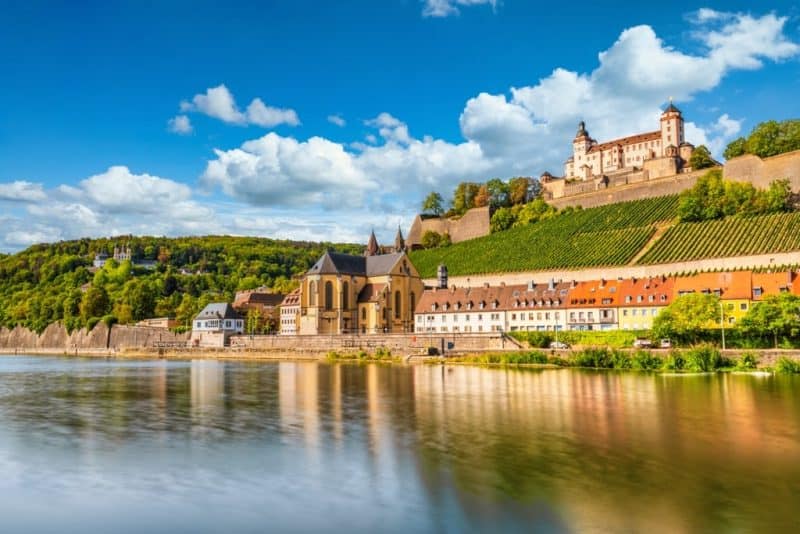
Wurzburg is on the Romantic Road, Germany’s most popular tourist route. You’ll find various medieval structures that attract thousands of visitors yearly. The city’s highlight is the Residenz – one of the country’s best baroque buildings, with many excellent surrounding attractions.
Also, the Alte Mainbrucke is another popular attraction. It is a bridge that spans directly across the city, dating back to 1473 when locals first started to build it. On summer nights, locals and tourists pack the bridge to socialize, take pictures, and enjoy the beautiful sunsets. Also, don’t forget to see the Wurzburg Residence because it is a UNESCO World Heritage Site dating back to 1720-44.
8. Nuremberg
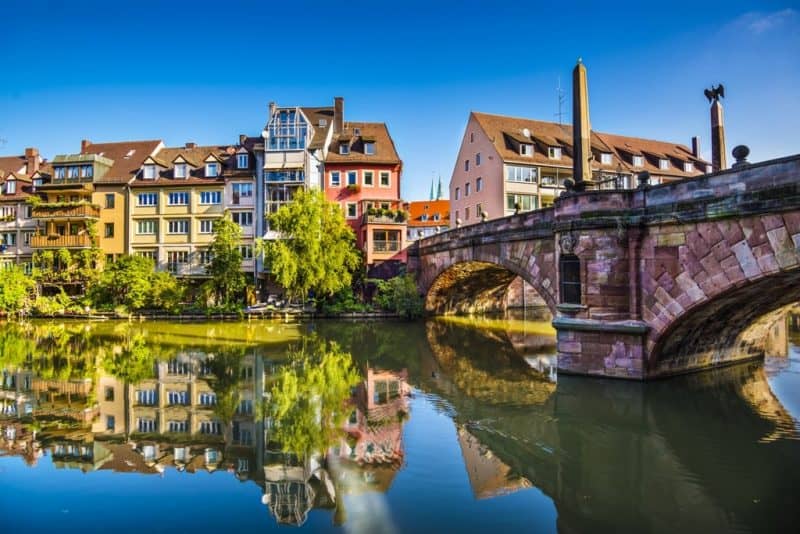
Nuremberg is Bavaria’s second-largest city and home to nearly 520,000 people. It is Germany’s 14th biggest city and the most popular attraction is the Altstadt (the German name for “old town”). The city is a historical leader in mechanical invention, science, printing, and humanism.
During World War II, the fighting led to the destruction of the ancient city. However, locals rebuilt the old town and it stands as beautiful as it was before the war. Be sure to visit the Imperial Castle of Nuremberg because it is one of Bavaria’s finest examples of Medieval architecture.
9. Ulm
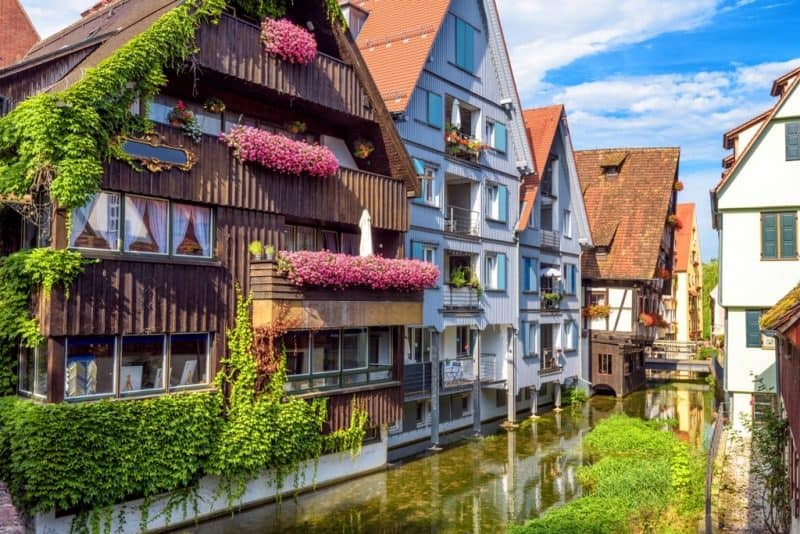
Ulm is a famous German medieval town situated on the River Danube. Ulm is on the border with Bavaria and is home to a population of 126,000.
One of the most popular attractions in Ulm is the Ulmer Muenster because it is the tallest church in the world. The church stands at an incredible 530 feet, way above the skyline, and offers stunning city views. You’ll love the unique church architecture dating back to 1387.
A popular neighborhood is the Fisherman’s and Tanners Quarter because it dates back to the 1500s. Visitors can find streets packed with timber-framed houses, shops, bars, and some of the town’s most delicious restaurants.
10. Bamberg
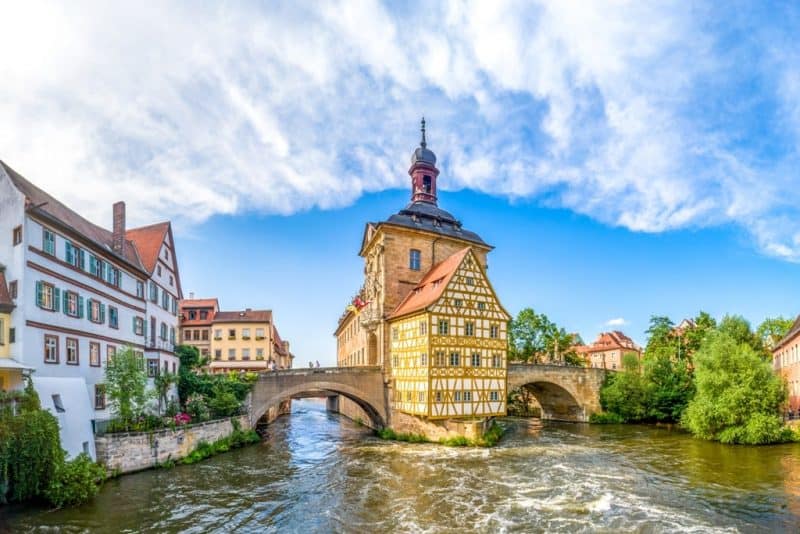
Bamberg is in northern Bavaria and home to over 75,000 people. It is a famous medieval town because it has structures dating from the 11th century to the 19th century. The Bamberg Altstadt is the town’s most renowned attraction and has over a thousand years of unique history.
The town has over 2,400 listed houses which is why it is a UNESCO World Heritage Site. The Altes Rathaus (Old Town Hall) is inside Bamberg’s old town and is a top-rated attraction. Initially, the Bamberg bishop refused to grant permission to build the old town, so locals decided to make it instead.
11. Esslingen
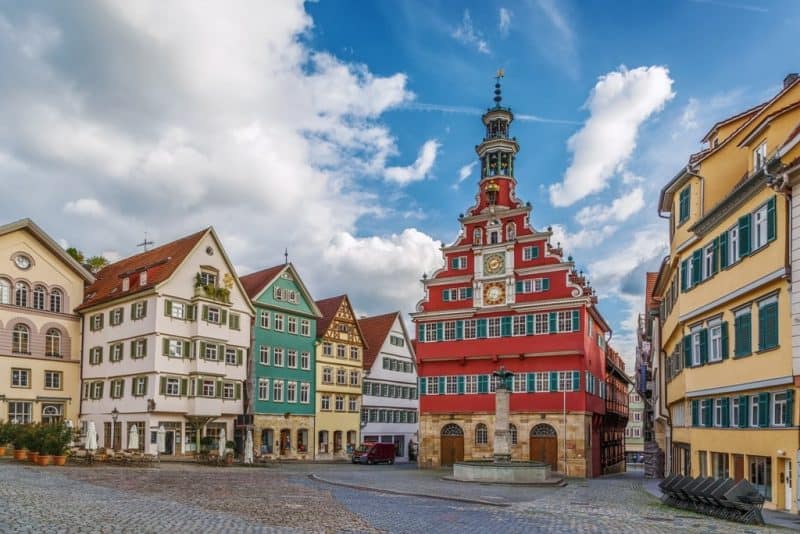
Esslingen is a beautiful medieval town near Stuttgart, home to centuries of medieval architecture. There are over 200 half-timbered houses inside the town. When you’re in the city, be sure to check out the 13th-century walls. You can climb up the medieval walls and take in the stunning town views as you climb.
There are various gothic churches in Esslingen and many churches still have stained glass windows from medieval times. The Christmas Markets are a superb spot to explore during the winter, offering street entertainers, market stalls, and a medieval village with local craftsmen.
12. Cochem
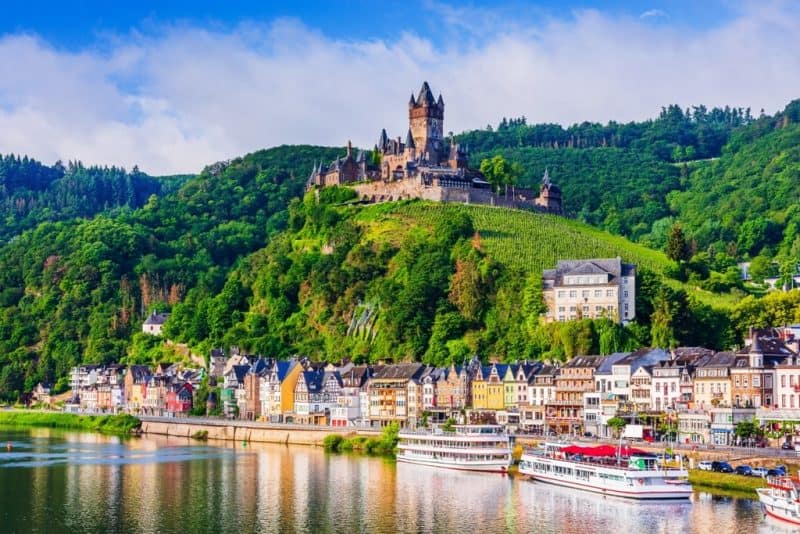
Cochem is a small medieval town in West Germany with just 5,000 inhabitants and excellent ancient structures. The biggest drawcard of the town is Reichsburg Cochem, a medieval castle that locals rebuilt into a fairytale style in the 1870s. You can see the castle from everywhere in the town, and it is a beautiful sight.
Altstadt is Cochem’s old town and home to restaurants, bars, and timbered houses. Much of the city survived the conflicts during World War II, offering an authentic insight into Germany’s history. These preserved structures include the city walls and the 14th-century gates.
13. Wernigerode
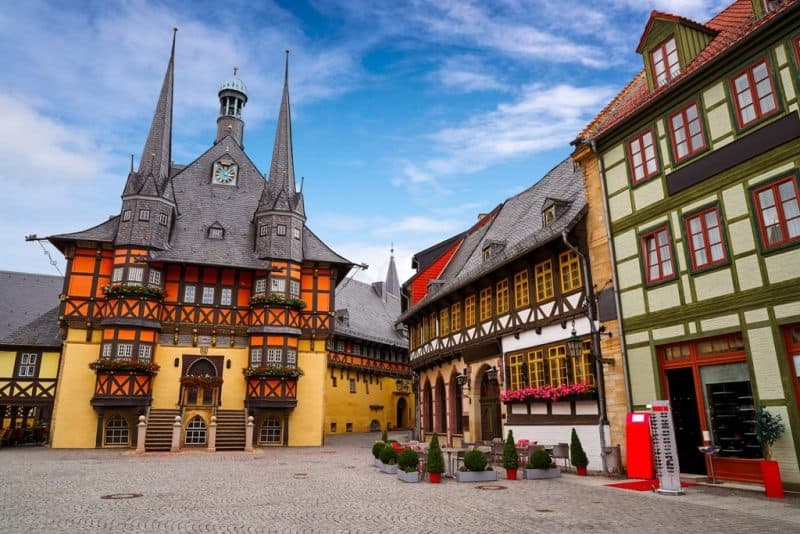
Wernigerode is a stunning medieval town in the Harz district. It is home to a phenomenal old town that dates back to the 11th century. Visitors always love to see Wernigerode Castle because it is a prime example of German gothic architecture. You can take a mini-train or even a horse-drawn wagon to the castle.
Also, if you’re looking to escape the town and get some fresh air in nature, you’ll love the Harz National Park. You’ll find various superb hiking trails, canals, and lakes that run through the national park.
If you have a passion for aviation, check out the Museum für Luftfahrt und Technik. It offers nearly 45 different aircraft and over 1,000 aerospace exhibits, including gas turbine engines, piston engines, and helicopters.
14. Monschau
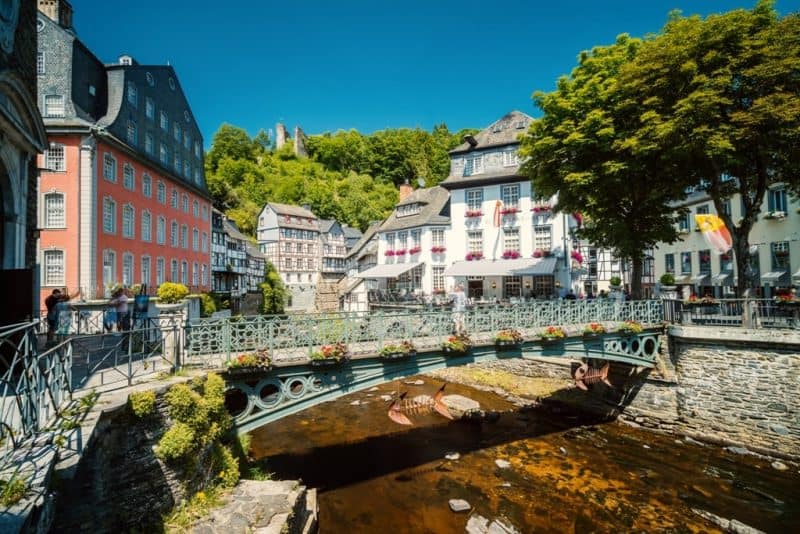
Monschau is in the Eifel region of West Germany and a splendid medieval town. The Eifeldom Monschau-Kalterherberg is one of Monschau’s top things to see. It is a stunning church built by Priest Arnoldy in 1897 and is famous because of the unique twin towers. If you are looking to escape the town and head into nature, check the Narzissenroute and its fantastic hiking trails.
Another excellent attraction is the textile headquarters of the notorious industrialist Scheibler family. Today, it is a museum and Monschau’s most famous attraction. The building’s fame comes from the unique red design, making it stand out from the surrounding timber buildings. You will find luxury Rococo, Empire Style Furnishings, and Louis XVI furnishings inside the museum.
The town also has a small castle called the Burg Monschau dating back to the 13th century. Over the years, destruction and abandonment destroyed the Burg Monschau but today Monschau has restored the castle to its former glory.

